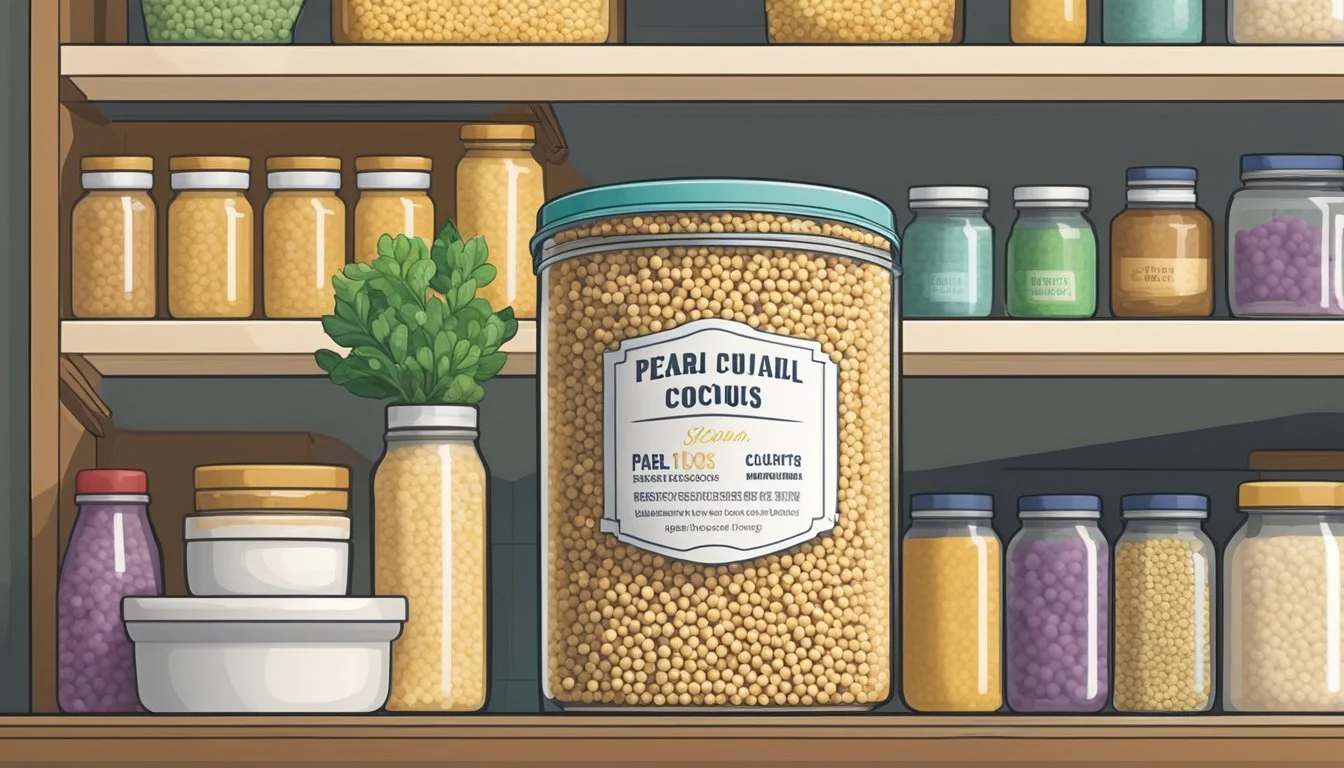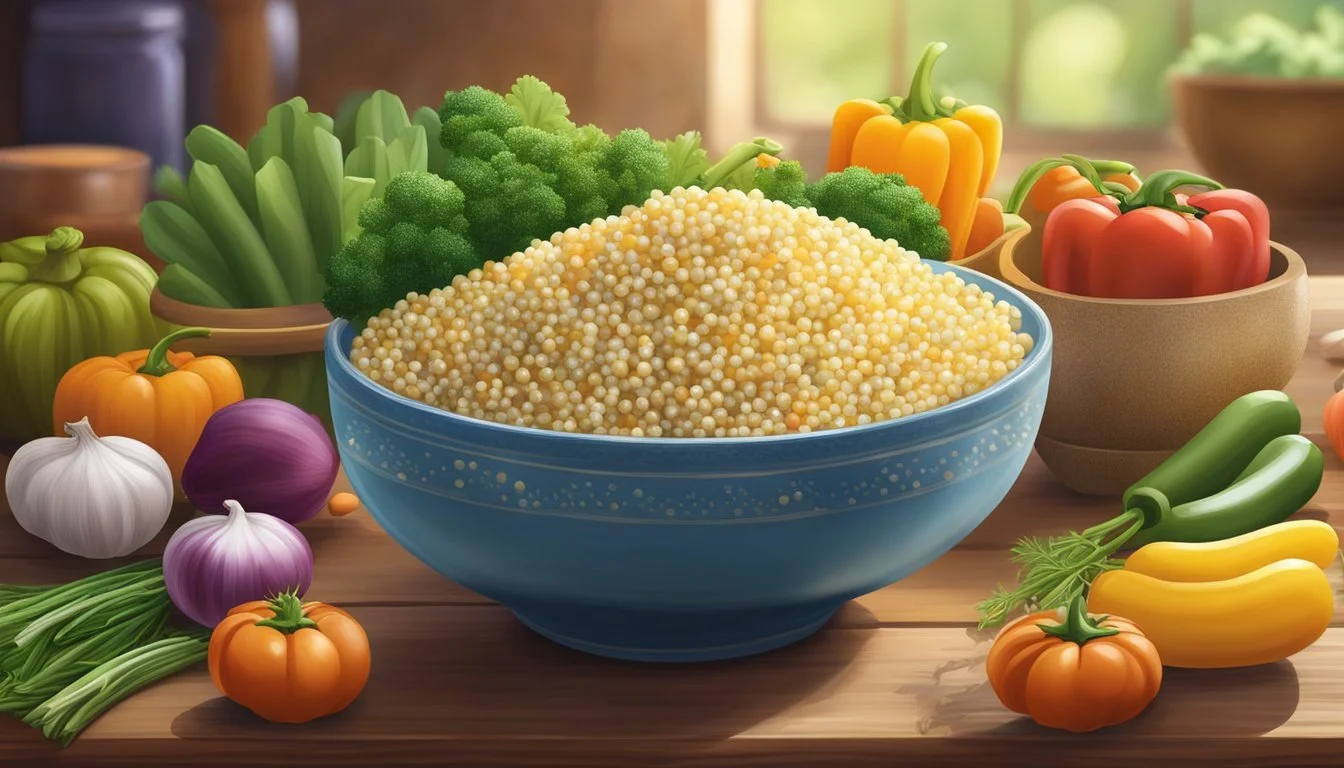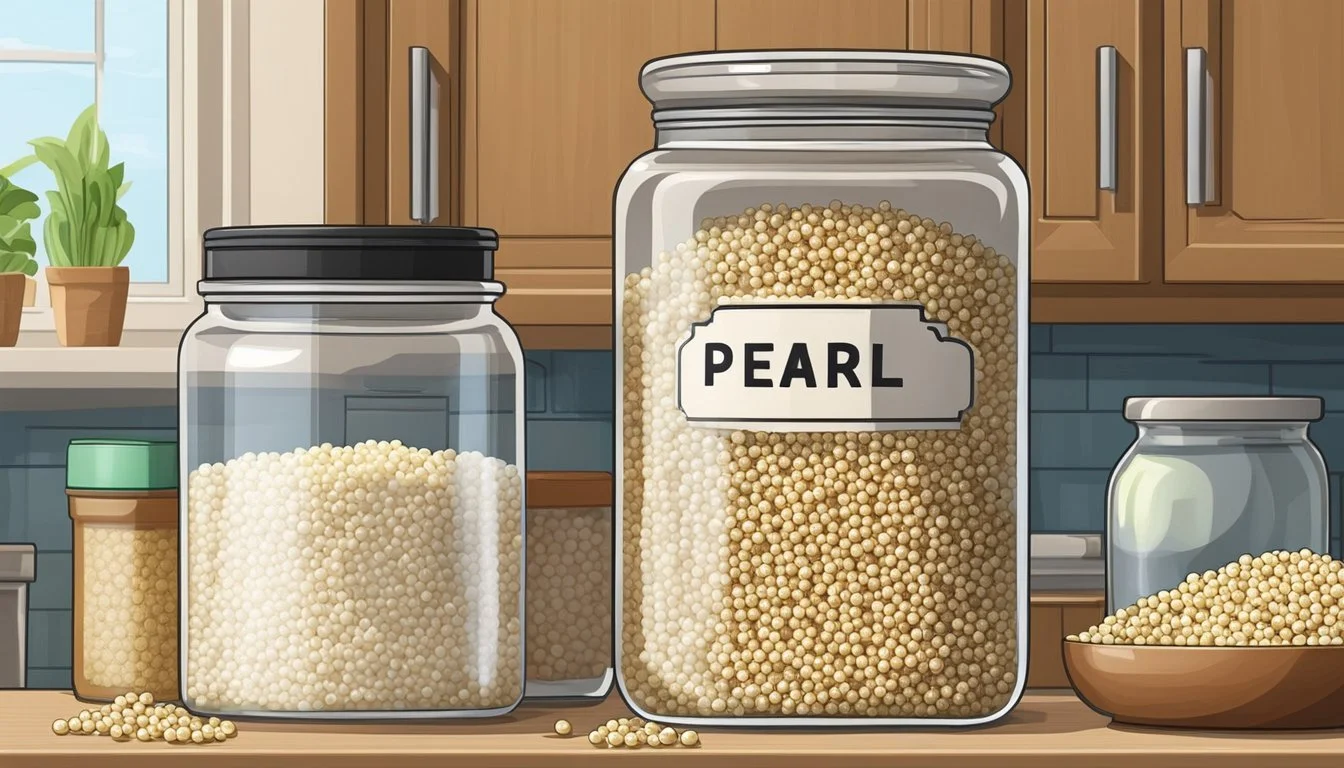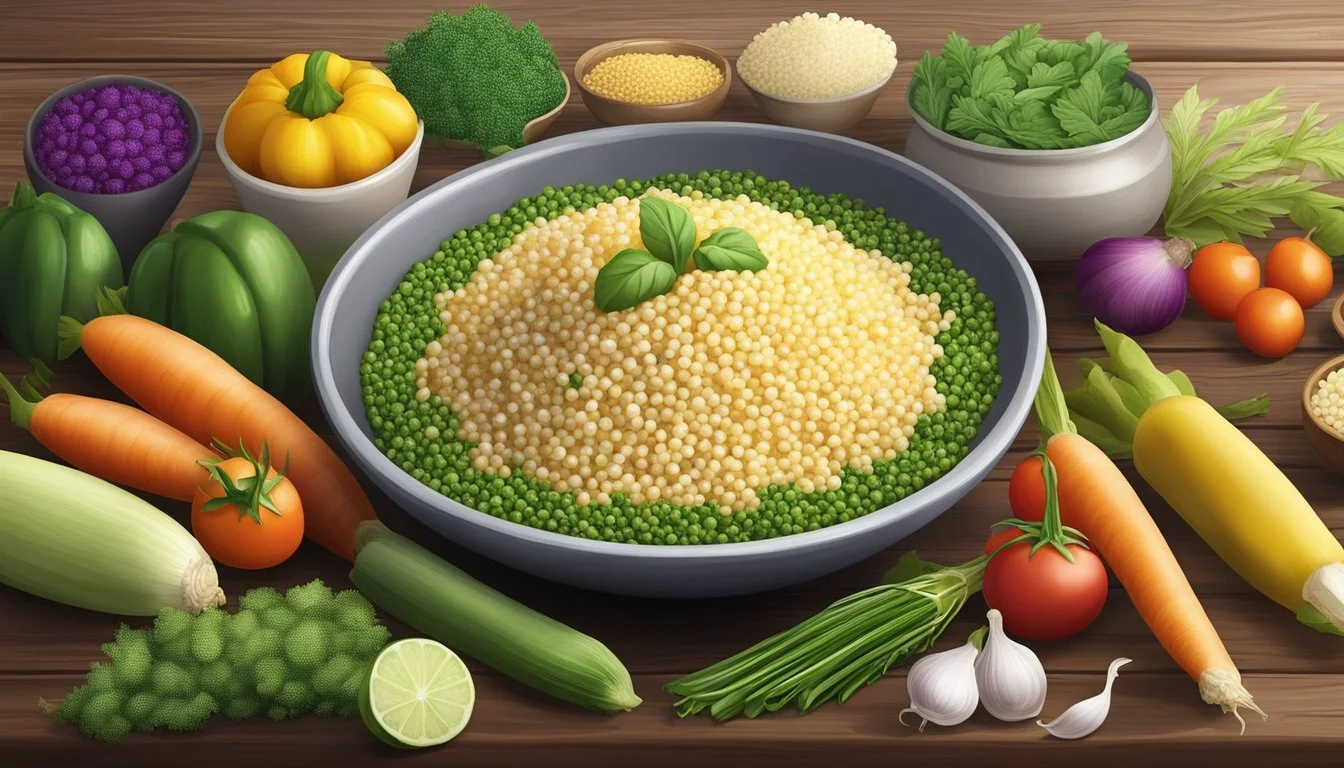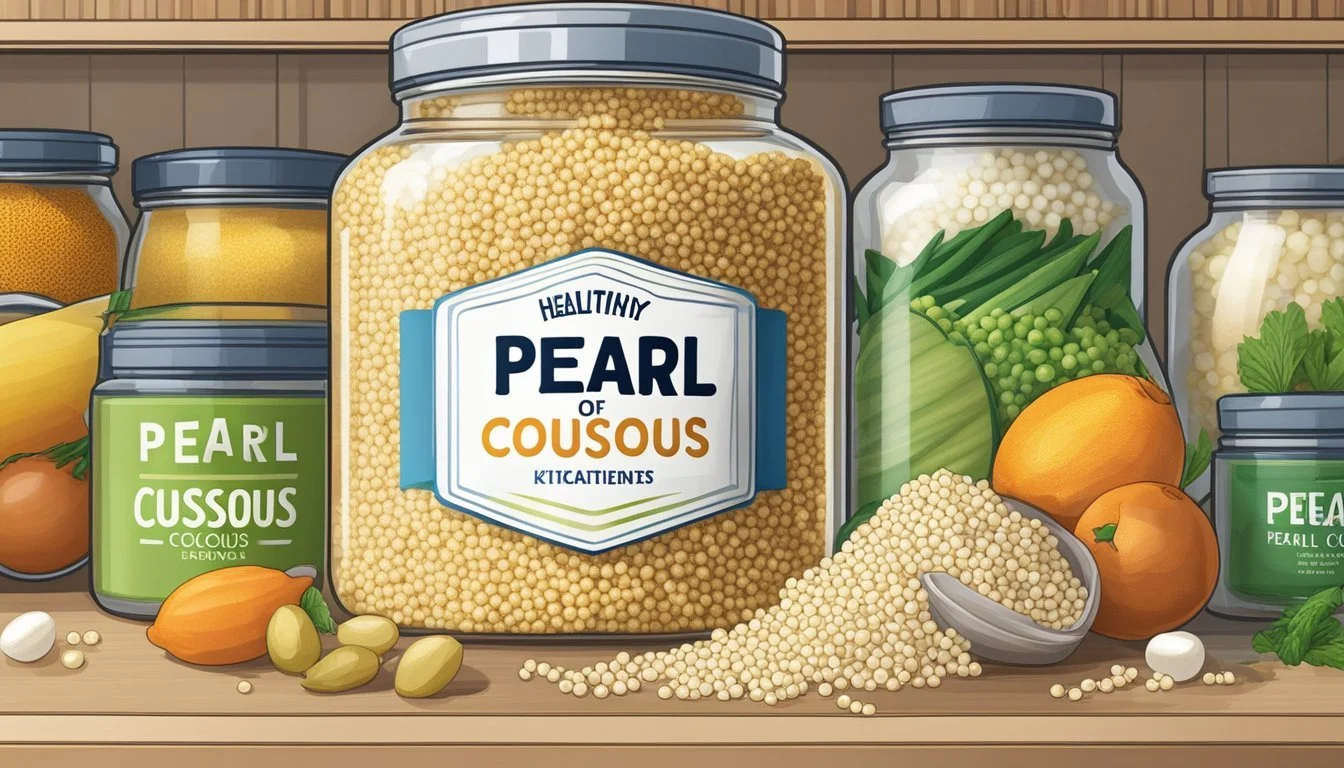How Long Does Pearl Couscous Last?
Shelf Life and Storage Tips
Pearl couscous (What wine goes well with couscous?), also known as Israeli couscous, is a small, round, pasta-like grain that's a staple in Middle Eastern and Mediterranean cuisine. Its popularity has to do with its versatile nature, as it can be used in a variety of dishes, ranging from salads and soups to main courses. Pearl couscous differs from regular couscous in size, with the pearl variety being larger and resembling small beads, which gives it a unique texture and an ability to absorb flavors well.
When it comes to shelf life, pearl couscous behaves much like other dried pasta. If kept in a cool, dry place, it can maintain its quality for a considerable period. Uncooked pearl couscous typically has a shelf life of one to two years, and the "best by" date on the packaging is a good initial reference point for determining its longevity. However, even past that date, it may still be safe to consume if it has been stored properly.
Once cooked, the shelf life of pearl couscous shortens significantly. It can last in the refrigerator for approximately three to seven days when stored in an airtight container. The presence of additional ingredients or condiments can affect its freshness and the duration for which it remains safe to eat. It's important to handle and store pearl couscous correctly to enjoy its full flavor and texture while ensuring food safety.
Understanding Couscous
Couscous, a versatile staple made from semolina, is an essential ingredient in many cultural cuisines. Its preparation and shelf life impact its quality and safety for consumption.
Types of Couscous
Couscous originates from durum wheat, with semolina as its core component. There are various types, defined largely by size and region of origin:
Moroccan Couscous: The smallest and most common variety, which cooks quickly.
Israeli Couscous (also known as Pearl Couscous): Larger with a chewy texture; it is preferred for salads and stews (What wine goes well with stews?).
Lebanese Couscous: The largest in size, commonly used in traditional Lebanese dishes.
Couscous Nutrition
As a product of semolina, couscous is predominantly a source of carbohydrates. However, it also contains notable amounts of protein and fiber. Couscous is not gluten-free, as both semolina and durum wheat flour contain gluten. Here's a quick overview of its nutritional highlights:
Carbohydrates: Essential for energy.
Protein: Supports muscle repair and growth.
Fiber: Beneficial for digestive health.
Couscous contributes to a well-rounded diet, but those with a gluten intolerance should avoid it due to its gluten content.
Cooking Couscous
Cooking couscous correctly is essential for achieving the ideal texture and flavor. Pearl couscous, with its larger, rounder grains, requires specific techniques to ensure it is tender and retains a slight chewiness.
Basic Cooking Techniques
To cook pearl couscous, one typically starts by toasting the grains in a little olive oil until they are golden brown to deepen their flavor. This process usually takes 3-5 minutes over medium heat, with frequent stirring to prevent burning. Next, water or broth is added to the toasted grains, and the mixture is brought to a simmer. The couscous should then be covered and allowed to simmer until it is tender.
Ideal Water to Couscous Ratio
The ratio of liquid to couscous is crucial for cooking. For pearl couscous, the recommended ratio is:
1.5 cups of water or broth for every 1 cup of pearl couscous
This will ensure that the couscous cooks thoroughly without becoming mushy or overly dry.
Enhancing Flavor with Broth and Herbs
Enhancing couscous is straightforward:
Broth: Instead of water, use chicken or vegetable broth for added flavor.
Herbs: Incorporate fresh herbs like parsley or cilantro for a fragrant touch.
Seasonings: Salt, pepper, and other seasonings can be adjusted to taste.
Always taste the couscous toward the end of cooking and adjust the seasoning as necessary. Remember that for a quick and flavorful side dish, pearl couscous can be an excellent choice when cooked with these methods.
Pearl Couscous Overview
Pearl couscous, also known as Israeli couscous, has distinct physical characteristics and culinary uses. It differs not only in size and cooking times from other couscous and grain varieties but also in texture and versatility.
Characteristics of Pearl Couscous
Pearl couscous is comprised of small, round, wheat-based granules. It's made from semolina or durum wheat flour. Unlike the smaller and more granular Moroccan couscous, pearl couscous boasts a distinctively chewy texture when cooked, which lends a pleasant bite to a variety of dishes. Typically, pearl couscous granules are about the size of peppercorns, making them larger than traditional Moroccan couscous.
Comparing Pearl Couscous to Other Varieties
When comparing pearl couscous to other grain-like foods, it occupies a unique niche. Unlike quinoa and rice, which are true grains, pearl couscous is actually a type of pasta. The larger size of pearl couscous means it has a longer cooking time compared to instant couscous, which is a smaller, quicker-cooking form of the North African staple. Its size and chewy texture make it well-suited for salads and as a hearty addition to soups and stews, standing in contrast to Moroccan couscous, which is finer, and cooks very rapidly, often used as a delicate bed for sauces and stews.
Storing Couscous
Proper storage methods are essential to preserving the quality of couscous, whether it is dry or cooked. Understanding the right conditions can prevent spoilage and extend its shelf life.
Shelf Life of Dry Couscous
Dry couscous should be kept in a cool, dry place away from moisture and pests. When stored in an airtight container, it can maintain its freshness for 1 to 2 years. It is critical to adhere to the expiration date on the package as a guide for optimal quality.
Refrigerating Cooked Couscous
Once couscous is cooked, placing it in a sealed container and storing it in the refrigerator is necessary to preserve its quality. Cooked couscous can last for 4 to 5 days when kept properly refrigerated. Ensure the container is moisture-free to prevent spoilage.
Freezing Couscous for Longevity
For long-term storage, couscous can be stored in the freezer for up to 12 months. It should be placed in an airtight container or freezer bag with excess air removed to prevent freezer burn. Cooked couscous benefits from this method as it minimizes the risk of spoilage and extends its usability.
Incorporating Couscous into Meals
Pearl couscous, with its versatile nature, is an excellent grain to incorporate into a range of recipes. It acts as a cornerstone for creativity in the kitchen, blending well with various ingredients from Mediterranean stews to refreshing salads.
Recipes and Preparation Ideas
To begin, they can cook pearl couscous by boiling it in water or stock until it's tender yet retains a slight chewiness, which typically takes about 10 minutes. Chefs often toast the couscous in a bit of olive oil before adding liquid to enhance its nutty flavor. They may incorporate a myriad of spices such as cumin, coriander, or a cinnamon stick during the toasting phase for additional depth.
Simple Couscous: Sauté with garlic, then simmer in vegetable or chicken stock.
Herbed Couscous: Mix in chopped fresh herbs (how long do fresh herbs last?) like parsley, cilantro, or mint post-cooking.
They frequently use pearl couscous as a base in hearty recipes, treating it much like rice or pasta. Examples range from incorporating it into tomato-based stews with lamb or beef to mixing it with sautéed vegetables for a complete meal.
Couscous in Salads and Side Dishes
Couscous shines as a component in salads and side dishes, providing a satisfying texture that complements a variety of ingredients. For a refreshing couscous salad, chefs often combine the cooked and cooled grains with a medley of chopped vegetables, such as bell peppers, cucumbers, and red onions, then dress the mixture with lemon juice and olive oil.
Salad Ingredients Dressing Extras Cucumber Olive oil Feta Tomato Lemon juice Olives (What wine goes well with olives?) Onion Balsamic vinegar Nuts
Similarly, they may pair couscous with roasted vegetables and chickpeas for a nutrient-dense side dish. By tossing it with quality olive oil, a squeeze of fresh lemon, and a variety of fresh herbs, it stands as a versatile and healthful option.
Roasted Veggie Couscous: Combine with zucchini, peppers, onions, and spices.
Mediterranean Couscous: Stir in Kalamata olives, diced tomatoes, crumbled feta, and a dressing of olive oil and lemon juice.
Creatively using spices alongside fresh herbs can transform the subtle flavor of couscous, making each dish a testament to its adaptability in the culinary world.
Tips for Perfect Couscous
For any home chef aiming to achieve perfect couscous, the focus must be on nailing the ideal texture and mastering the art of seasoning for a flavorful dish. Following these tips helps ensure couscous that is both delicious and correctly cooked.
Achieving Ideal Texture
The secret to perfectly cooked couscous lies in the water-to-couscous ratio and the cooking time:
Water-to-Couscous Ratio: Use a 1.5:1 ratio of liquid to couscous. For every cup of couscous, one should use 1.5 cups of liquid.
Cooking Time: Simmer the couscous until all the liquid is absorbed and the grains are tender, which typically takes about 10-15 minutes.
Key steps in the cooking process include:
Bring the liquid (water or broth) to a boil before adding the couscous.
Once the couscous is in, reduce the heat to a low simmer to prevent overcooking.
When done, remove from heat and let it sit covered for a few minutes. Then fluff with a fork to separate the grains and prevent clumps.
Seasoning and Flavor Pairing
Couscous absorbs flavors well, making the addition of seasonings and herbs crucial. Optimal seasoning choices include:
Salt: A pinch of salt enhances the natural flavor of the couscous.
Olive Oil or Butter: A tablespoon of olive oil or butter can be added to the cooking liquid for a rich, silky texture.
Herbs and Spices: Incorporate fresh herbs like parsley, dill, or mint to zest things up. Dried spices such as garlic powder, paprika, and cumin introduce depth and warmth.
To accentuate the couscous with added freshness:
Lemon: Squeeze fresh lemon juice or sprinkle lemon zest for a tangy kick.
Garlic: Finely chopped or roasted garlic infuses the couscous with a pungent, aromatic flair.
Finally, for a nutty crunch, toast the couscous in olive oil before adding the cooking liquid. This extra step amplifies the flavor profile and adds an irresistible toasted dimension to the dish.
Health and Dietary Considerations
When considering the inclusion of pearl couscous in various diets, it's important to assess its compatibility with special dietary needs and identify any potential allergens. Consumers should seek alternatives if necessary for their health and dietary preferences.
Couscous for Special Diets
Pearl couscous can be a versatile ingredient suited to different types of meal plans. For those following a vegan or vegetarian diet, it provides a substantial base for dishes that can be paired with a variety of plant-based foods. Its texture complements Mediterranean cuisine, often featuring it alongside fresh vegetables, herbs, and olive oil. However, pearl couscous is not inherently gluten-free; it is made from wheat, which contains gluten. Individuals with gluten sensitivities or celiac disease should avoid traditional couscous and may opt for gluten-free alternatives made from corn, rice, or other non-wheat grains.
Potential Allergens and Alternatives
The primary allergen present in pearl couscous is wheat, which should be avoided by individuals with wheat allergies or gluten intolerances. For those needing a gluten-free option, alternatives such as quinoa, buckwheat, or brown rice couscous could serve as suitable substitutes. These alternatives can often be prepared in similar ways to traditional couscous, maintaining the integrity of the dish while catering to dietary restrictions.
Troubleshooting Common Issues
When dealing with pearl couscous, two common problems may arise: clumping during cooking and potential spoilage. Addressing these issues promptly ensures the couscous maintains its texture and quality.
Preventing Couscous Clumping
To prevent pearl couscous from clumping, one should start with boiling water or broth before adding the couscous. Stirring the couscous occasionally as it cooks will help maintain its distinct, separated texture. Additionally, a dash of oil or butter can be mixed in to coat the grains, which further reduces the chance of clumps forming. Keeping the pot covered with a lid helps to distribute the steam and heat evenly, which is crucial for consistently cooked couscous.
Dealing with Spoilage and Contamination
Pearl couscous, like other dried grains, can spoil if not stored correctly. To ensure quality and prevent contamination, one should store couscous in an airtight container in a cool, dry place. If the couscous shows any signs of mold or an off smell, it is critical to dispose of it immediately to avoid consumption of spoiled food. Dry couscous should be checked periodically for these signs, especially if stored for an extended period. When cooked, one should refrigerate the couscous within two hours to prevent the growth of harmful bacteria, and it should be consumed within three to five days.

